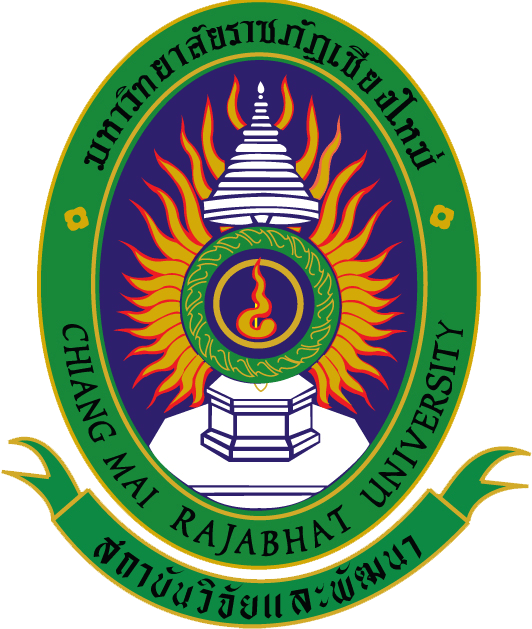
ระบบสารสนเทศงานวิจัย สถาบันวิจัยและพัฒนา มหาวิทยาลัยราชภัฏเชียงใหม่
Research Information System(RIS)
การพัฒนาแบบคัดกรองและระบบประเมินแนวโน้มในการเกิดภาวะสมองเสื่อมของผู้สูงอายุในอำเภอสารภี จังหวัดเชียงใหม่ โดยใช้เทคนิค Data Mining
อาจารย์ ดร.ณัฎฐ์ฤทัย อรุณศิโรจน์
คณะมนุษยศาสตร์และสังคมศาสตร์
คำสำคัญ :
เลขทะเบียน :
1532-65-HUSO-TSRI
บทคัดย่อ
อาการสมองเสื่อม (Dementia) เป็นกลุ่มอาการทางระบบประสาทอันเป็นผลจากเซลล์สมองที่ถูกทำลายอย่างช้าๆและต่อเนื่องส่งผลให้บุคคลนั้นๆมีความผิดปกติทางด้านการรู้คิดทำให้เกิดการสูญเสียความจำระยะสั้นและความจำระยะยาว สำหรับประเทศไทยอัตราความชุกของจำนวนผู้ป่วยที่มีภาวะสมองเสื่อมเพิ่มขึ้นอย่างต่อเนื่องจากอดีตจนถึงปัจจุบัน เพราะโครงสร้างทางด้านประชากรของประเทศมีการเปลี่ยนแปลง สังคมไทยกำลังเข้าสู่สังคมผู้สูงอายุอย่างสมบูรณ์เนื่องจากจำนวนผู้สูงอายุที่เพิ่มขึ้นอย่างต่อเนื่องในแต่ละปี ทำให้โรคสมองเสื่อมกลายเป็นโรคเรื้อรังที่ติดอันดับ 1 ใน 5 ของโรคที่เกิดกับผู้สูงอายุในปัจจุบัน นอกจากนั้นปัจจัยเพิ่มเติมที่ส่งผลต่อความชุกของผู้ป่วยที่มีภาวะสมองเสื่อมในจังหวัดเชียงใหม่ คือข้อจำกัดของกระบวนการในการคัดกรองที่ต้องดำเนินการโดยบุคลากรทางการแพทย์เท่านั้น ระยะทางระหว่างที่อยู่อาศัยและโรงพยาบาลและการขาดแคลนบุคลากรทางการแพทย์เฉพาะทาง ดังนั้นการวิจัยครั้งนี้จึงมีแนวคิดในการพัฒนารูปแบบการคัดกรองภาวะผู้ป่วยสมองเสื่อมของกลุ่มผู้สูงอายุอำเภอสารภี จังหวัดเชียงใหม่ โดยการสร้างแอปพลิเคชันในการคัดกรองเบื้องต้นของผู้สูงอายุที่มีแนวโน้มในการเกิดภาวะสมองเสื่อม โดยการวิจัยในครั้งนี้ใช้แบบประเมินความสามารถในการรู้คิด จำนวน 4 แบบประเมินได้แก่เครื่องมือการคัดกรองสำหรับอาสาสมัครสาธารณสุข คือแบบประเมิน 14 ข้อคำถามสำหรับประเมินปัญหาด้านความจำ โดยผู้ที่อ่านออกเขียนได้ สามารถประเมินด้วยตนเอง แบบประเมิน Mini-Cog สำหรับประเมินปัญหาด้านความจำ การวางแผนและมิติสัมพันธ์และแบบประเมิน IQCODE-Modified 8 ข้อ สำหรับญาติหรือผู้ดูแลใกล้ชิดเป็นผู้ให้คำตอบเกี่ยวกับอาการด้านความจำ และการบริหารจัดการ และในส่วนของเครื่องมือการคัดกรองสำหรับบุคลากรทางการแพทย์และสาธารณสุข ได้แก่ แบบประเมิน AMT สำหรับประเมินปัญหาด้านการรับรู้เวลา สถานที่ บุคคล ความใส่ใจและความจำ ซึ่งเครื่องมือการคัดกรองเหล่านี้เป็นเครื่องมือที่มีความเหมาะสมในการคัดกรองผู้สูงอายุที่มีภาวะสมองเสื่อม (สถาบันเวชศาสตร์สมเด็จพระสังฆราชญาณสังวรเพื่อผู้สูงอายุ, 2564) นอกจากนั้นรูปแบบความสัมพันธ์ระหว่างภาวะสมองเสื่อมกับบริบทสถานการณ์ของผู้สูงอายุจะถูกนำมาใช้ในการประเมินแนวโน้มในการเกิดภาวะสมองเสื่อมของผู้สูงอายุ ซึ่งจะส่งผลทำให้แอปพลิเคชันในการคัดกรองดังกล่าวมีความเที่ยงตรงและแม่นยำมากยิ่งขึ้นและสอดคล้องกับบริบทสถานการณ์ของพื้นที่นั้นๆ อันจะส่งผลให้ชุมชนสามารถหาแนวทางในการบริหารจัดการผู้สูงอายุที่มีภาวะสมองเสื่อมโดยใช้ความร่วมมือของชุมชนเป็นฐานในขั้นตอนต่อไป
ผู้วิจัยได้พัฒนาแอปพลิเคชันบนอุปกรณ์พกพา “Brain Screening” บนระบบปฏิบัติการณ์แอนดรอยด์ มีกระบวนการวิจัย 9 ขั้นตอน คือ 1) ศึกษาข้อมูลเอกสารทางด้านอาการภาวะสมองเสื่อม เครื่องมือที่ใช้คัดกรองภาวะสมองเสื่อมต่างๆ ทฤษฎีทางภาษาศาสตร์ รวมไปถึงศึกษาข้อมูลของอาการภาวะสมองเสื่อมจากบุคลากรทางการแพทย์ของโรงพยาบาลประสาทเชียงใหม่ 2) ลงพื้นที่วินิจฉัยชุมชนอย่างมีส่วนร่วมในการศึกษาถึงบริบทสถานการณ์ภาวะสมองเสื่อมภายในพื้นที่ตำบลหนองผึ้ง ตำบลยางเนิ้งและตำบลสารภี 3) ลงพื้นที่คัดเลือกกลุ่มตัวอย่างคือ กลุ่มผู้สูงอายุจำนวน 877 คนที่มีภูมิลำเนาในพื้นที่ตำบลหนองผึ้ง ตำบลยางเนิ้งและตำบลสารภี และทำการประเมินภาวะสมองเสื่อมโดยใช้แบบทดสอบประเภทMMSE-Thai 2002 ในการประเมินภาวะสมองเสื่อมดังกล่าวจะดำเนินการโดยบุคลากรทางการแพทย์ 4) ลงพื้นที่เพื่อเก็บข้อมูลโดยใช้แบบสอบถามข้อมูลทั่วไปสำหรับผู้สูงอายุ เพื่อเก็บข้อมูลบริบทสถานการณ์ภาวะสมองเสื่อมซึ่งจะประกอบไปด้วยข้อมูลประชากร ข้อมูลสถานภาพ ข้อมูลพฤติกรรมทางด้านสุขภาพ 5) รวบรวมข้อมูลปฐมภูมิเพื่อวิเคราะห์หาปแบบความสัมพันธ์ระหว่างภาวะสมองเสื่อมกับบริบทสถานการณ์ของผู้สูงอายุในอำเภอสารภี จังหวัดเชียงใหม่และจัดทำ Storyboard ซึ่งมีการบรรยายถึงรูปแบบของแอปพลิเคชันซึ่งการนำเสนอแบบประเมินความสามารถในการรู้คิด จำนวน 4 แบบประเมินได้แก่แบบประเมิน 14 ข้อคำถามสำหรับประเมินปัญหาด้านความจำ แบบประเมิน Mini-Cog แบบประเมิน IQCODE-Modified 8 ข้อ สำหรับญาติหรือผู้ดูแลใกล้ชิดเป็นผู้ให้คำตอบเกี่ยวกับอาการด้านความจำ และการบริหารจัดการสำหรับอาสาสมัครสาธารณสุข และแบบประเมิน AMT สำหรับบุคลากรทางการแพทย์และสาธารณสุข 6) ออกแบบระบบและสร้างแอปพลิเคชันโดยมีบุคลากรทางการแพทย์ทางด้านจิตเวช ผู้สูงอายุและนักกิจกรรมบำบัดปฏิบัติการให้คำปรึกษา 7) ทดสอบการทำงานของแอปพลิเคชันและปรับปรุงแอปพลิเคชัน 8) จัดทำคู่มือการใช้ และ 9) เผยแพร่และให้บริการแอปพลิเคชัน โดยผลการประเมินความพึงพอใจของอาสาสมัครสาธารณสุขต่อการใช้แอปพลิเคชันดังกล่าวในภาพรวมมีความพึงพอใจในระดับมากค่าเฉลี่ยเท่ากับ 4.19 และส่วนเบี่ยงเบนมาตรฐานเท่ากับ 0.53
ส่วนการวิเคราะห์ข้อมูลรูปแบบความสัมพันธ์ระหว่างภาวะสมองเสื่อมกับบริบทสถานการณ์ของผู้สูงอายุในอำเภอสารภี จังหวัดเชียงใหม่ พบว่า ปัจจัยที่สัมพันธ์กับภาวะสมองเสื่อมของผู้สูงอายุในอำเภอสารภี จังหวัดเชียงใหม่ ได้แก่อายุ การทำงานปัจจุบัน โรคประจำตัว การสูบบุหรี่ การดื่มเครื่องดื่มที่มีแอลกอฮอล์ การออกกำลังกาย และการเข้ากิจกรรมทางสังคม ส่วนปัจจัยที่ไม่มีผลต่อภาวะสมองเสื่อมของผู้สูงอายุ คือเพศ สถานภาพสมรส ระดับการศึกษา อาชีพเดิม การได้รับการกระทบกระเทือนทางสมอง การทานอาหารเสริม การมีพี่น้องหรือญาติที่มีภาวะสมองเสื่อม และงานอดิเรกยามว่าง
นอกจากนั้นแอปพลิเคชัน “Brain Screening” ได้มีการเผยแพร่แอปพลิเคชันดังกล่าวบน Play Store เพื่อเป็นอีกช่องทางหนึ่งที่ให้ผู้ใช้งานสามารถเข้าไปเลือกดาวน์โหลดและติดตั้งแอปพลิเคชั่นได้ในวงกว้าง อันส่งผลให้เกิดกระบวนการคัดกรองภาวะสมองเสื่อมของผู้สูงอายุได้อย่างเป็นรูปธรรม และสามารถนำไปใช้ได้อย่างแพร่หลาย เมื่อมีการคัดกรองผู้สูงอายุให้ทราบว่าตัวผู้สูงอายุนั้นๆ มีสภาวะความเสี่ยงในการเกิดภาวะสมองเสื่อมในช่วงเริ่มต้นจะเป็นการช่วยบรรเทาให้ผลกระทบที่เกิดจากภาวะสมองเสื่อมของผู้สูงอายุลดน้อยลง และนำไปสู่ภาวะสมองเสื่อมที่สามารถรักษาได้ ชะลอความเสื่อมของโรค ลดปัญหาการเกิดภาวะแทรกซ้อนและลดอัตราการเสียชีวิต และเพื่อช่วยลดภาระของญาติผู้ดูแลในการดูแลและจัดการแก้ไขปัญหาพฤติกรรมและอารมณ์ของผู้ป่วยได้อย่างมีประสิทธิภาพรวมไปถึงการลดภาระหน้าที่ของโรงพยาบาลภาครัฐที่ไม่สามารถรองรับผู้ป่วยเรื้อรังจำนวนมากได้ในปริมาณมาก
Abstract
Dementia is a neurological symptom as a result of the brain cells being gradually and continually damaged, making affected individuals having cognitive abnormality and losing their short- and long-term memories. In Thailand, the prevalence of the numbers of dementia patients has been increasing continuously until today due to the changing demographic structure. The country has officially become an ageing society with an increasing number of aged people, making dementia to become one of the five chronic diseases among the elderly nowadays. Additional factors affecting the prevalence of the patients in Chiang Mai province are a limitation of the screening process that must be performed by medical personnel only, distances between residences and hospitals, and insufficient numbers of medical specialists. Therefore, this research aimed to develop a screening test for the elderly with dementia in Saraphi district, Chiang Mai province, by creating an application for preliminary screening those with a tendency to suffer from the ailment. This research is based on four cognitive ability assessments. The first one is a 14-cognitive question items for public health volunteers and literate individuals to carry out by themselves. The second one is a Mini-Cog assessment to evaluate memories, planning, and relative dimensions. The third one is an 8-item IQCODE-Modified assessment for relatives or caretakers to assess memories and management of patients. The last one is an AMT assessment for medical and public health personnel to evaluate patients’ perceptions on time, place, people, personal care, and memory. These screening tools are suitable for screening the elderly with dementia (Institute of Geriatric Medicine, 2021). Moreover, the relationship between dementia and circumstantial contexts of the elderly is incorporated into the assessment of the tendency to have dementia, making the application more valid and accurate as well as in accordance with contexts of a particular area. Thus, communities will be able to find guidelines to manage the elderly with dementia in their respective communities.
The portable “Brain Screening” application is operated on the Android Operating System. The research methodology comprised nine steps as follows. 1) Conduct a documentary research on dementia symptoms, screening tools, linguistic theories, and dementia data from medical personnel at the Chiang Mai Neurological Hospital. 2) Carry out a field study with community participation to investigate circumstances of dementia in Tambon Nong Phueng, Tambon Yang Noeng, and Tambon Saraphi. 3) Select 877 elderly persons in the study area as the sample group and assess their dementia symptoms by using the MMSE-Thai 2002 test, which was conducted by medical personnel. 4) Collect the data about dementia situations by using a questionnaire that consisted of demographic profile, status, and health-related behaviors. 5) Analyze the preliminary data to find out the relationship between dementia and circumstantial contexts of the elderly. A storyboard was formulated, which described the application model that presented four cognitive assessments: the 14-question item memory assessment, the Mini-Cog assessment, the 8-question item IQCODE-Modified assessment for relatives or caretakers to assess memories and for public health volunteers for management, and the AMT assessment for public health and medical personnel. 6) Design the system and create the application with the consultancy from a psychiatric doctor for the elderly and an occupational therapist. 7) Test the operation of the application and carry out the improvement. 8) Prepare the manual. 9) Publicize and make available the application. The result of the satisfaction assessment of the public health volunteers about the implementation of the application was at a high level, with the overall mean of 4.19 and the standard deviation of 0.53.
The analysis of the relationship between dementia and circumstantial contexts of the elderly in the study area revealed that the factors relating to dementia of the elderly were composed of current work, personal ailments, smoking, drinking, exercise, and participation in social activities. The factors not relating to dementia comprised gender, marital status, education, previous occupations, brain damage, taking food supplements, having siblings or relative with dementia, and hobbies.
The Brain Screening Application is publicized and available for download and installation at Play Store to facilitate users to access another channel. When the application is more widely used, the screening process for dementia will become more concrete at the public level. The screening for the risks at the beginning stage will lessen the impact of dementia on the elderly and could lead to effective treatments, slow the damaging effects, reduce complications and loss of life, and relief the burdens of caretakers in dealing with behavioral and emotional problems of patients. Furthermore, the screening could reduce the burdens of state-run hospitals which are unable to accommodate a large number of patients with chronic diseases.
ไฟล์งานวิจัย
ข้อมูลการนำไปใช้ประโยชน์
5 19 ส.ค. 2565
สำนักงานคณะกรรมการส่งเสริมวิทยาศาสตร์ วิจัยและนวัตกรรม (สกสว.)
สำนักงานคณะกรรมการส่งเสริมวิทยาศาสตร์ วิจัยและนวัตกรรม (สกสว.) ชั้น 14 อาคาร เอส เอ็ม ทาวเวอร์ 979/17-21 ถนนพหลโยธิน แขวงสามเสนใน เขตพญาไท กรุงเทพฯ 10400
02 278 8200
callcenter@trf.or.th, webmaster@trf.or.th